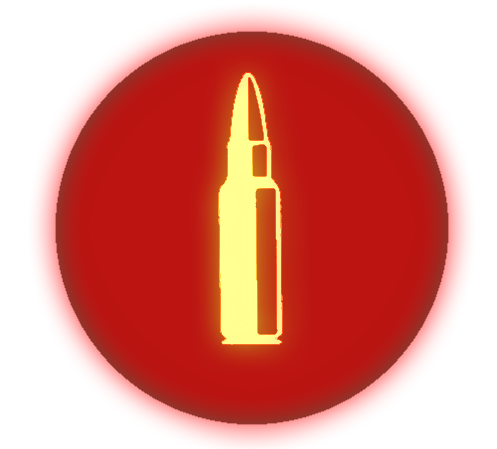Hello, I’m Heck, I’ve been certified/licensed and employed as a firearms engineer for about 5 years, but have been tinkering for roughly 15. I will be attempting to disprove some of the common misconceptions, and provide the reader with a lot of valuable information, while including pictures, revolving around my passion; firearms.
Magazines vs. Clips
Magazines hold ammunition which is then pushed into the chamber to be fired, the clip is a loading tool you would use to put ammunition into the magazine. Soldiers haven’t carried clips en masse since the second world war, and they were phased out almost completely by the time of the Vietnam conflict. Magazines, however, have always been a part of bolt-operated repeating rifles. Magazine: https://sep.yimg.com/ay/gunclip-depot/gun-magazines-3.gif
On a bolt action rifle, which commonly uses clips, the magazine is internalized and normally can’t be removed. The clip is slotted into the “Clip Guide” then the ammunition is pushed by the thumb into the internal magazine. However, on a modern semi-automatic (or even fully-automatic, we’ll go over that) you’re going to be dealing with a removable magazine, to which can be loaded either with a clip or by hand, then is fed into the rifle.
Clip:https://upload.wikimedia.org/wikipedia/commons/9/97/Clip_M1-SKS.JPG
Differences between rifles, why it’s important to know them
Knowing the difference between types of firearms not only makes your arguments stronger, but also helps the individual get a much deeper understanding to what firearms actually are, we’ll go through these sorted by the time needed between shots.
Musket/Flintlock: These are slightly more rare at this point, but it’s important to list them as they’ll give the reader a much clearer understanding as to how far technology has come. First, we will look at loading, the individual must carry with them three things. Their powder, their shot, and their wad. The barrel must be swabbed before loading to ensure no burning ash will cause a premature explosion. After the barrel has been cleaned, the individual first puts in their measured powder. If too much powder is inserted the rifle might explode, too little and the shot might not move far enough to leave the barrel and the firearm is equally destroyed. Next, the wad and shot are rammed down the barrel and seated tightly. The firearm is ready to fire after between 20 seconds and 3 minutes depending on the shooter. http://shipwrecklibrary.com/wp-content/uploads/2016/12/Loading_Musket.jpg
Bolt action/Breach Loader: These are still common with civilians worldwide as they’re perfect for hunters and land management. All the shooter needs are their rifle and their ammunition.
For the bolt action, the rifle is loaded with a clip and the bolt is pushed forwards to push a round into the chamber, at this time it’s ready to fire in a matter of seconds. http://spartacus-educational.com/FWWboltP.jpg
For the breach loader, either the barrel swings down on a hinge or the breach block must be cleared, then a round is hand loaded into the breach. This takes slightly longer than the bolt-action, but is better for your general hunter. http://chestofbooks.com/reference/American-Cyclopaedia-10/images/Springfield-Breech-loader-1-Vertical-Section-of-Breech-loa.jpg
Semi-automatic:
Semi-automatics are the most common, and the best for home defence. The bolt runs in a track and is actioned via the forces of recoil, allowing multiple pulls of the trigger before needing to touch the bolt again. To load, the individual only needs to either insert a magazine into the magazine well, or use a clip to load the internal magazine, take off the safety, then charge the rifle by pulling the bolt. At this point, the rifle is ready to fire. https://i.ytimg.com/vi/rJMXXuGhINE/maxresdefault.jpg
Fully-automatic:
This is exactly the same as semi-automatic, however, the sear is restricted from engaging the hammer, which allows the rifle to fire multiple shots on one trigger pull. These are, however, very rare outside of military hands, as they’re highly regulated and very expensive. They do, however, find their way to criminals, and the wealthy civilian. https://gastatic.com/blog/wp-content/uploads/2016/04/FN-M16-16.jpg
Types of Repeating Action
Gas: This is a type of repeating action where a portion of the gas created by the explosion of the gunpowder is ported back towards the bolt to help push the bolt backwards. https://1s18w12tqveh1xfywp1ulx42-wpengine.netdna-ssl.com/wp-content/uploads/Gas-Impingement-3-300x153.jpg
Blowback: This is a type of repeating action where the force of recoil alone cycles the bolt. This is common in older rifles, also most pistols and sub-machine guns, it’s not a great system for rifle cartridges. http://www.sharenator.com/image/92906/
Manual: This is the type of action you’ll find on bolt and lever-action rifles, the shooter manually cycles the bolt between each shot. https://v7b7b3s9.ssl.hwcdn.net/wp-content/uploads/2015/11/Henry-Lead-11.jpg
Delayed: This type could be any of the main three, but it uses a mechanical device to ensure the bolt remains closed until pressures drop to a safe level. Earlier repeating rifles had the issue of blowouts, which this solved. Now you’ll find some form of delay in most firearms. http://1.bp.blogspot.com/_59GYpEVAu0U/TG4hGWcLdiI/AAAAAAAAAbg/wkocXHle9Qk/s1600/roller1.jpg
Open bolt: In this type, the bolt is held open between shots, this is cheaper to produce, thus these became very common during early fully-automatic machine gun designing, however, fell out of popularity after the National Firearms Act in the US, and after the switch away from smaller cartridge service rifles. http://images.spambob.net/navy-vet-1959/top-pivot-trigger-02.png
Closed bolt: This is the opposite of open bolt, here the bolt is locked closed after each shot. http://oi45.tinypic.com/15p01fk.jpg
Long recoil: In this form of repeating action, the barrel moves with the bolt, reducing recoil felt by the shooter. This is only common with higher calibres, usually on anti-material rifles and mounted canons. https://i.pinimg.com/564x/0e/36/1a/0e361a261be1e91a7cf21a20db5a9dc1--sniper-rifle--caliber-sniper-rifles.jpg
Revolving: Just as it says, this type uses a revolving cylinder to hold ammunition. This, however, has major flaws. Namely, the majority of the gases escape before the bullet has left the barrel, as well the firearm is limited to an unchangeable amount of ammunition. Revolvers also have single action, meaning there’s one shot per setting of the hammer, and double action, which allows the revolver to be used with semi-automatic function. https://upload.wikimedia.org/wikipedia/commons/thumb/c/c9/Colt_Autentica.jpg/330px-Colt_Autentica.jpg
Thank you for reading, I likely missed some things, but I can answer questions in the comments. The next part will be politics, I’ll post that either later tonight, or something tomorrow.

